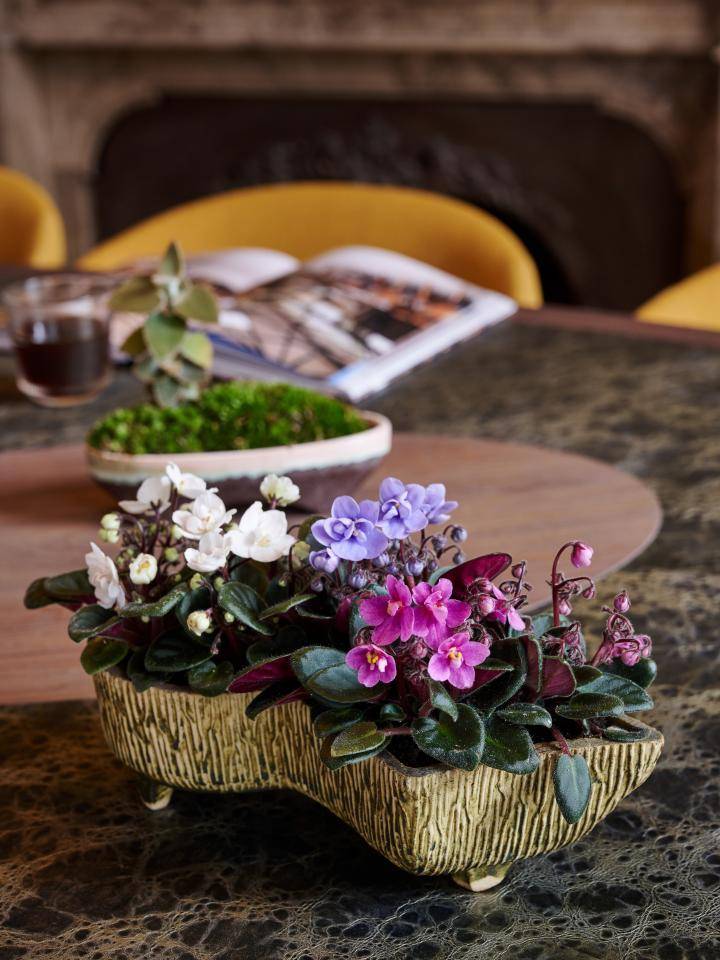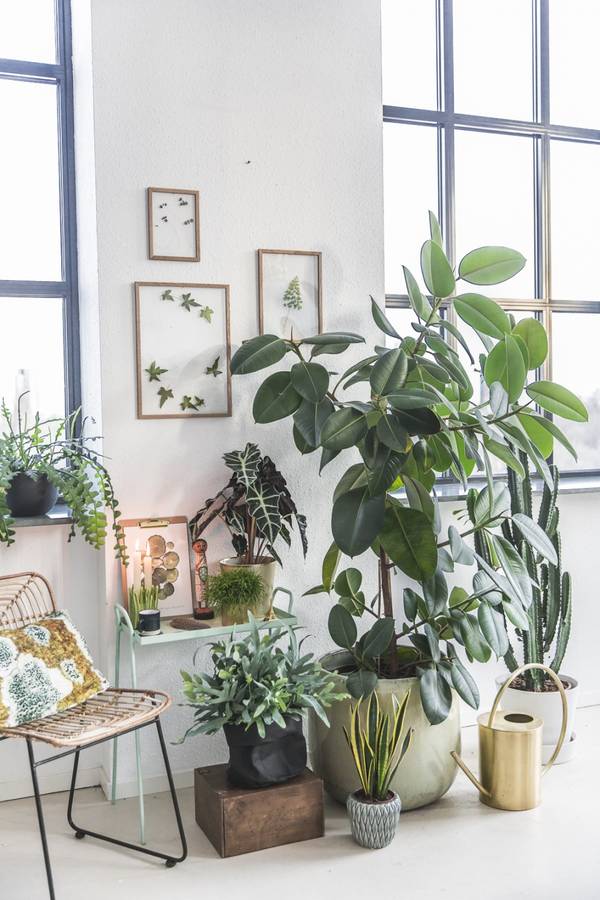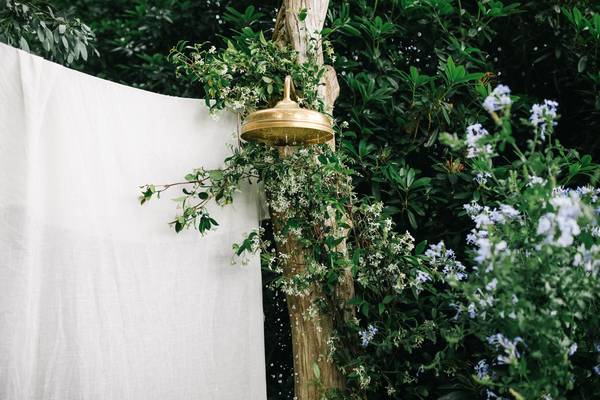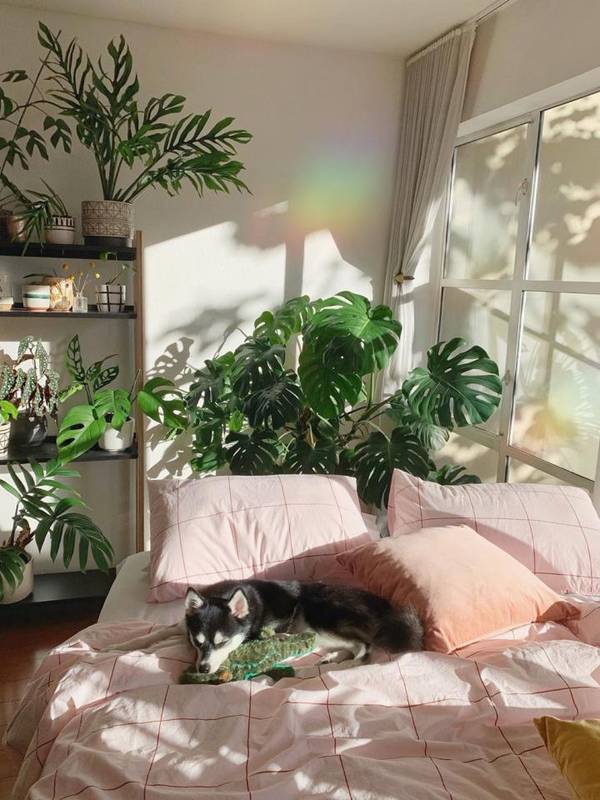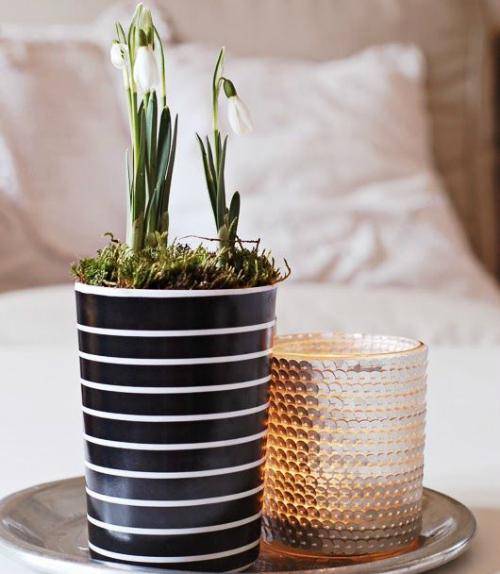
Care
- Place the plant in a light spot, but out of direct sunlight.
- Water the African violet when the potting soil feels a little dry.
- Pour water on the soil, not on the flowers or leaves.
- Every three weeks, feed with plant food.
- Carefully remove spent flowers or old leaves.
- The plant does not like temperature fluctuations or temperatures that are too low.
- With good care, Saintpaulia can bloom for years.
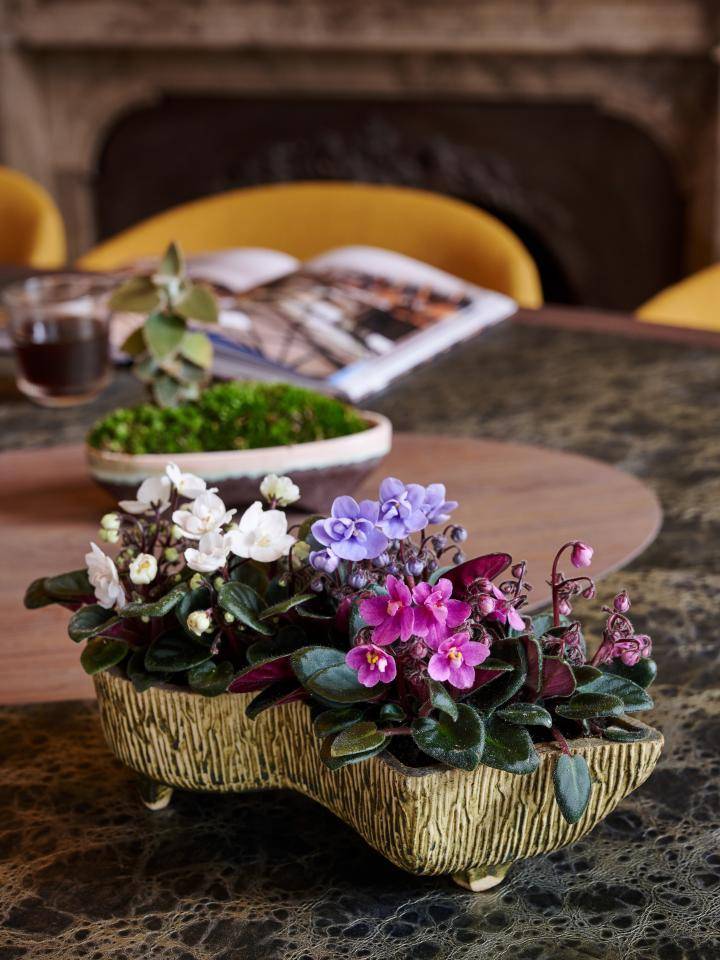
Colours and shapes
The houseplant forms rosettes of cuddly, round fleshy leaves. Clusters of flowers in white, pink, purple or blue grow on the flower stems. Nowadays, the plant is also available with bicoloured or striped flowers. They have a single or double row of petals and sometimes a wavy edge. The size of African violets varies considerably. Most do not grow taller than 20 to 25 centimetres, but there are also dwarf varieties. The width, however, can be considerable - up to about 40 centimetres.
Symbolism
Many flowers have a symbolic meaning, although this does not apply to Saintpaulia. Why not give her some symbolism yourself? Think for example of the firmness of the leaves, the colours of the flowers or the timelessness of the African violet.
Origin
Fun fact: the Saintpaulia was named after Baron Walter von Saint Paul St. Claire in 1893. Now that's a name! This man discovered the African violet in the Usambara Mountains in Tanzania.
